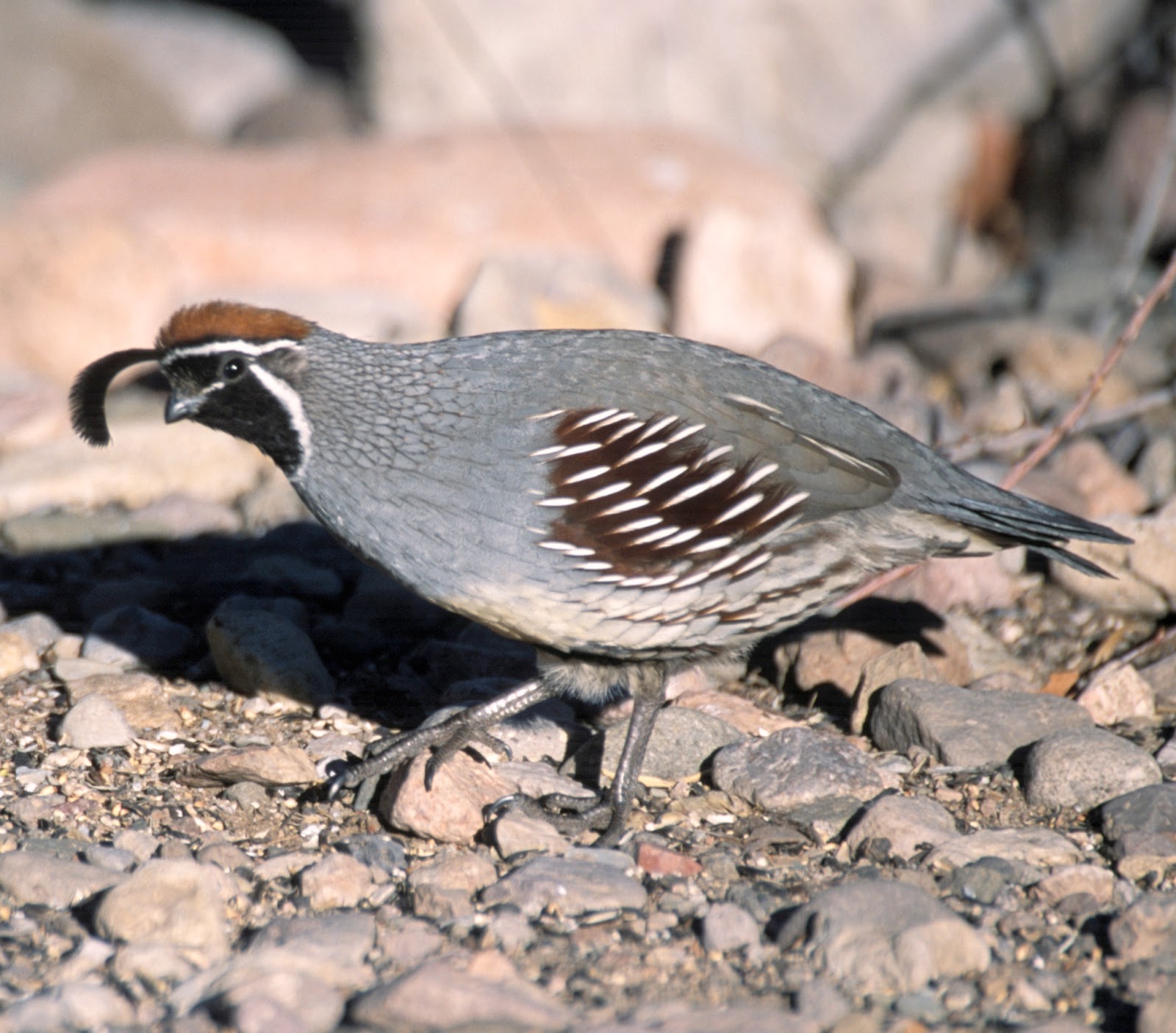 |
| Photo by John Mosesso (Wikipedia) |
Common name:
Gambel’s quail (en); colim-de-elmo (pt); colin de Gambel (fr); colín de Gambel (es); helmwachtel (de)
Taxonomy:
Order Galliformes
Family Odontophoridae
Range:
This species is found in the western United States and north-western Mexico, from southern Nevada and Utah, through Arizona, New Mexico and western Texas, and into Sonora and Sinaloa along the eastern coast of the Gulf of California.
Size:
These birds are 24-28 cm long and have a wingspan of 34-36 cm. They weigh 160-210 g.
Habitat:
The Gambel’s quail is found in hot deserts, mainly in areas dominated my mesquite and other thorny scrubs. They also use arable land to a lesser extent. They occur from sea level up to an altitude of 1.600 m.
Diet:
They mainly feed on a variety of seeds and leaves, as well and cacti fruits and berries. During spring and summer they supplement this herbivorous diet with a few insects.
Breeding:
Gambel’s quails are considered monogamous, although females can sometimes live the young with the male to produce another brood with a new father. They breed in April-August and nest in a shallow bowl made of twigs, grass stems and leaves, and lined with feathers. The nest is usually placed on the ground, often hidden under a scrub or rock, but can sometimes be placed on a tree up to 10 m above the ground. The female lays 10-12 dull white eggs with brown spots, which she mainly incubates alone for 21-23 days. The chicks are able to run around and feed themselves within hours of hatching, but will remain with the parents for some time.
Conservation:
IUCN status – LC (Least Concern)
This species has a large breeding range and the global population is estimated to be above 1 million individuals. The populations had a stable trend over the last 4 decades.







